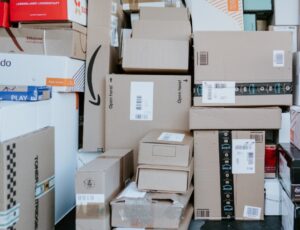New retail era: From contactless omnichannel fulfilment to changing customer perceptions

Zach Thomann, executive vice president and general manager at PFS, on navigating a new retail era.
Though the rise in online shopping has been inevitable, Covid-19 acted as a catalyst for the increased move towards ecommerce. Following this shift, other retail trends are rapidly becoming a top priority; both for the survival of high street, and online retailers and brands, as we enter the new era of retail.
Recent analysis of the high street has revealed that whilst there have been queues outside bargain brands such as Primark, others such as John Lewis have found their customer base cannibalised by the likes of Amazon since lockdown. Following the latest announcement of Amazon’s free food delivery offering, online grocery retailers are also feeling the pressure to keep up. Elsewhere, it seems that independent stores are thriving; presenting a promising opportunity to diversify the high street as we know it.
Here we discuss the long-term implications of the pandemic on consumer shopping habits. Plus, the trends retailers must adapt to remain competitive, and the technology needed to ensure success.
The need for a true omnichannel experience
With this increased movement to online, retailers must have a strong omnichannel offering to keep up with consumer demand and expectations. Before the lockdown, whilst several retailers were offering click and collect services, consumers were still taking a gamble on whether the item would be in stock or not.
This is ultimately down to the point of sale (POS) and inventory systems not being in sync with each other. This can lead to customers being left dissatisfied when the items are not in stock at their local store. A gap in inventory visibility is a huge inconvenience for both the retailer and customer. However, it can be easily resolved with the right tools – and can build loyalty at the same time.
Now the majority of lockdown restrictions are lifted, there is an even greater need for high street retailers to offer a true omnichannel experience
Achieving this can only occur by implementing a one system mentality; where data from the POS and inventory systems is centralised under one order management system. Only then will retailers be able to truly offer a streamlined and effective ‘buy online, pick up in-store’ model (BOPIS). A model that benefits both the business and the customer.
By utilising a single data source that captures information through technology across the entire supply chain, retailers can use this to push orders to the best location and ensure orders are fulfilled. When retailers use the same technology in stores, they can be confident in the consistency of the data; streamlining the process and ensuring customers receive a good experience when opting for click and collect. With 25% of shoppers having tried a new online retailer during the lockdown, a good consumer experience can make or break in retaining loyalty.
Back up: don’t forget reverse logistics
For many retailers considering an omnichannel fulfilment strategy, reverse logistics can remain an afterthought. However, as we accustom to the ‘new normal’, the concept of ‘buy in-store, return online’ is becoming increasingly important.
Now that high street fashion stores have reopened, government rulings reveal that changing rooms will remain closed to protect consumer health. This could mean a surge in over-purchasing and increased returns. Quarantining of returned goods also creates new challenges to the returns process. It requires additional storage space within the store and delays to getting the products back on the shelf. Being able to return items online rather than in-store will, therefore, be essential to alleviate this pressure.
In order to keep up, retailers should expand their online capabilities
After all, the more effective the website, the better the outcome for the customer. Website efficiency will result in a decrease in returns and customer service enquiries. Plus, an increase in brand loyalty and consumer word of mouth.
Retailers must also be aware of the rise of online returns. It is likely to see a steep increase as more and more consumers migrate online. This can be for several reasons. Often consumers ordering online will act more frivolously in comparison to when they are in-store; purchasing items that they then decide not to keep later.
To overcome this, online retailers and high street brands must look to invest in new technology that enables them to navigate the new customer journey alongside consumers. Developments in augmented reality, virtual reality and 3D visualisation are already beginning to make big waves in the clothing industry; allowing customers to virtually try on garments and outfits both online and offline.
Changing delivery expectations
Whilst delivery expectations have eased during the lockdown, PFS’ research indicates that 71% of UK shoppers expected their items to reach them within a week compared to 90% normally, this could change at any moment as we transition back to normality. To overcome this, retailers must find a way to utilise store inventory to fulfil online orders; adapting their store models to work better for them and their customers.
A hybrid store model is a good example where retailers make their existing store space work twice as hard. Doubling up as a store open to the public, whilst incorporating the technology that enables it to fulfil online orders for in-store pick-up or ship from store. Additionally, inventory management and order picking systems are becoming more important as online retailers and brands seek to implement multichannel fulfilment operations. A necessity for many as they seek to release and utilise store inventory to keep up with increased ecommerce volume and decrease inventory stockpiles.
As well as the speed at which goods are delivered, the method of delivery is also set to change
The UK could also adopt trends such as kerbside pick-up, which the US already frequently uses. This ensures consumers do not need to go into a store to pick up an order. Instead, retail workers will bring the item directly to the customer, meaning minimal store interaction.
The use of drone delivery is also something we anticipate will increase over the coming months. As well as enabling the safe delivery of packages to consumers, drone technology is set to increase across the whole ecommerce fulfilment operation to decrease the number of touchpoints required to complete an order.
Welcome to the new world of retail
It is clear that following lockdown, consumer attitudes are shifting. Retailers must be aware of this change in attitude to ensure success. As we transition to a ‘new normal’, both online and brick-and-mortar retailers and brands will have no choice but to adapt to ensure business continuity and remain set for future growth.
With preparations for peak season 2020 already front of mind, closely followed by the UK’s official withdrawal from the EU, businesses must act now to limit the impact of further challenges in the months ahead.
Ultimately the future success of retail, as it always has done, relies heavily on the loyalty of customers. To be able to retain customers, brands need to start by understanding how their attitudes have changed. Then respond effectively to retain them. Retailers simply cannot afford to ignore this shift in behaviour and risk losing out in what is already proving to be a turbulent and increasingly competitive marketplace.












